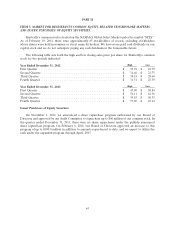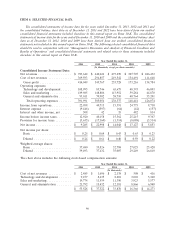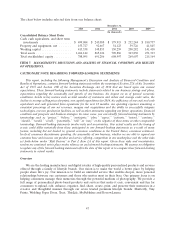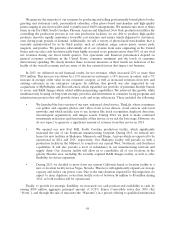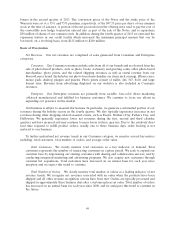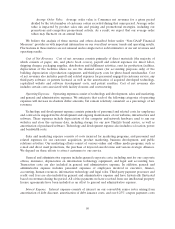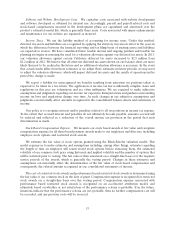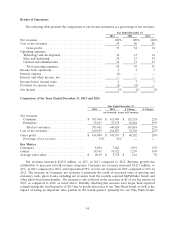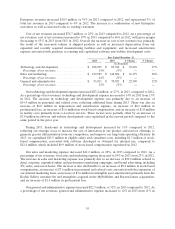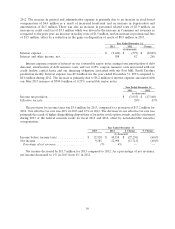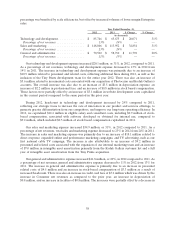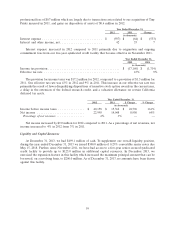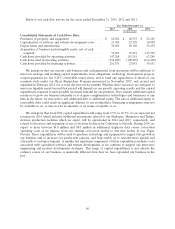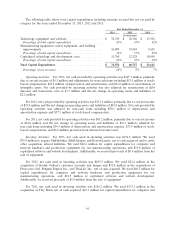Shutterfly 2013 Annual Report Download - page 55
Download and view the complete annual report
Please find page 55 of the 2013 Shutterfly annual report below. You can navigate through the pages in the report by either clicking on the pages listed below, or by using the keyword search tool below to find specific information within the annual report.Software and Website Development Costs. We capitalize costs associated with website development
and software developed or obtained for internal use. Accordingly, payroll and payroll-related costs and
stock-based compensation incurred in the development phase are capitalized and amortized over the
product’s estimated useful life, which is generally three years. Costs associated with minor enhancements
and maintenance for our website are expensed as incurred.
Income Taxes. We use the liability method of accounting for income taxes. Under this method,
deferred tax assets and liabilities are recognized by applying the statutory tax rates in effect in the years in
which the differences between the financial reporting and tax filing bases of existing assets and liabilities
are expected to reverse. We have considered future taxable income and ongoing prudent and feasible tax
planning strategies in assessing the need for a valuation allowance against our deferred tax assets. In 2013,
our valuation allowance against certain California deferred tax assets increased to $2.9 million from
$2.2 million in 2012. We believe that all other net deferred tax assets shown on our balance sheet are more
likely than not to be realized in the future and no additional valuation allowance is necessary. In the event
that actual results differ from those estimates or we adjust those estimates in future periods, we may need
to adjust the valuation allowance, which will impact deferred tax assets and the results of operations in the
period the change is made.
We report a liability for unrecognized tax benefits resulting from uncertain tax positions taken or
expected to be taken in a tax return. The application of income tax law is inherently complex. Laws and
regulations in this area are voluminous and are often ambiguous. We are required to make subjective
assumptions and judgments regarding our income tax exposures. Interpretations and guidance surrounding
income tax laws and regulations change over time. As such, changes in our subjective assumptions and
judgments can materially affect amounts recognized in the consolidated balance sheets and statements of
income.
Our policy is to recognize interest and/or penalties related to all tax positions in income tax expense.
To the extent that accrued interest and penalties do not ultimately become payable, amounts accrued will
be reduced and reflected as a reduction of the overall income tax provision in the period that such
determination is made.
Stock-Based Compensation Expense. We measure our stock based awards at fair value and recognize
compensation expense for all share-based payment awards made to our employees and directors, including
employee stock options and restricted stock awards.
We estimate the fair value of stock options granted using the Black-Scholes valuation model. This
model requires us to make estimates and assumptions including, among other things, estimates regarding
the length of time an employee will retain vested stock options before exercising them, the estimated
volatility of our common stock price using historical and implied volatility and the number of options that
will be forfeited prior to vesting. The fair value is then amortized on a straight-line basis over the requisite
service periods of the awards, which is generally the vesting period. Changes in these estimates and
assumptions can materially affect the determination of the fair value of stock-based compensation and
consequently, the related amount recognized in our consolidated statements of income.
The cost of restricted stock awards and performance based restricted stock awards is determined using
the fair value of our common stock on the date of grant. Compensation expense is recognized for restricted
stock awards on a straight-line basis over the vesting period. Compensation expense associated with
performance based restricted stock awards is recognized on an accelerated attribution model, and
ultimately based on whether or not satisfaction of the performance criteria is probable. If in the future,
situations indicate that the performance criteria are not probable, then no further compensation cost will
be recorded, and any previous costs will be reversed.
53




